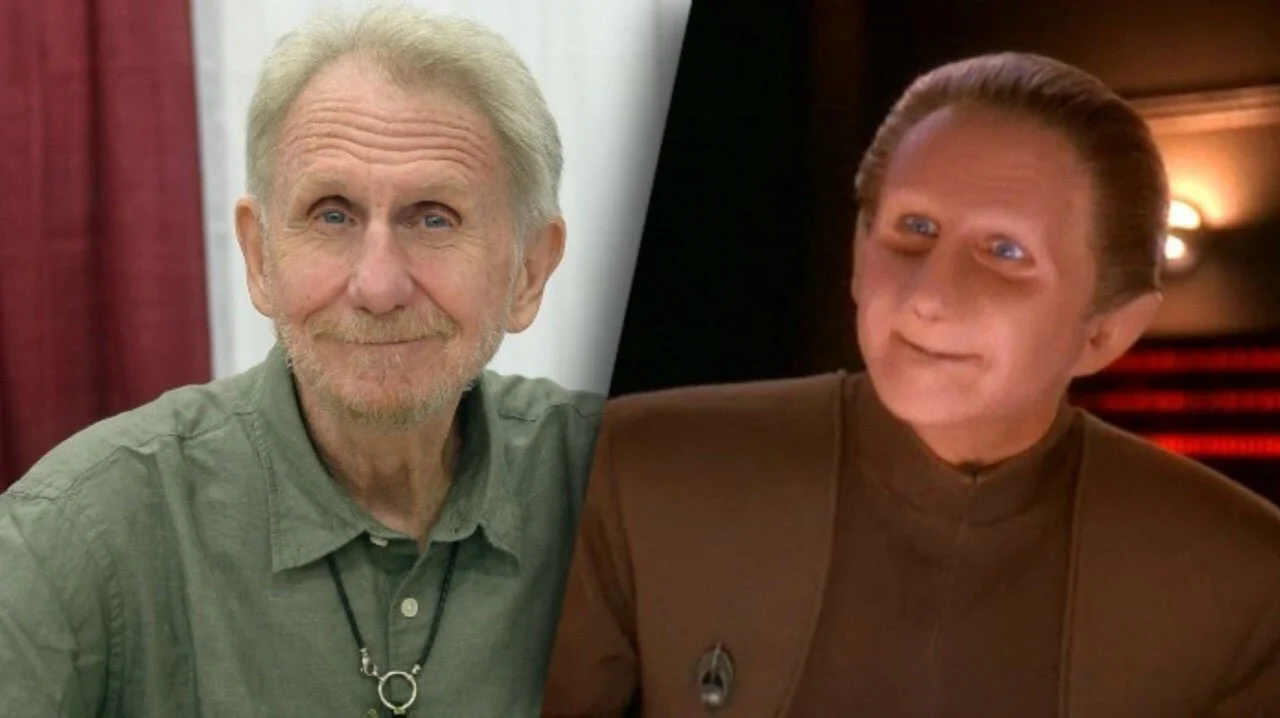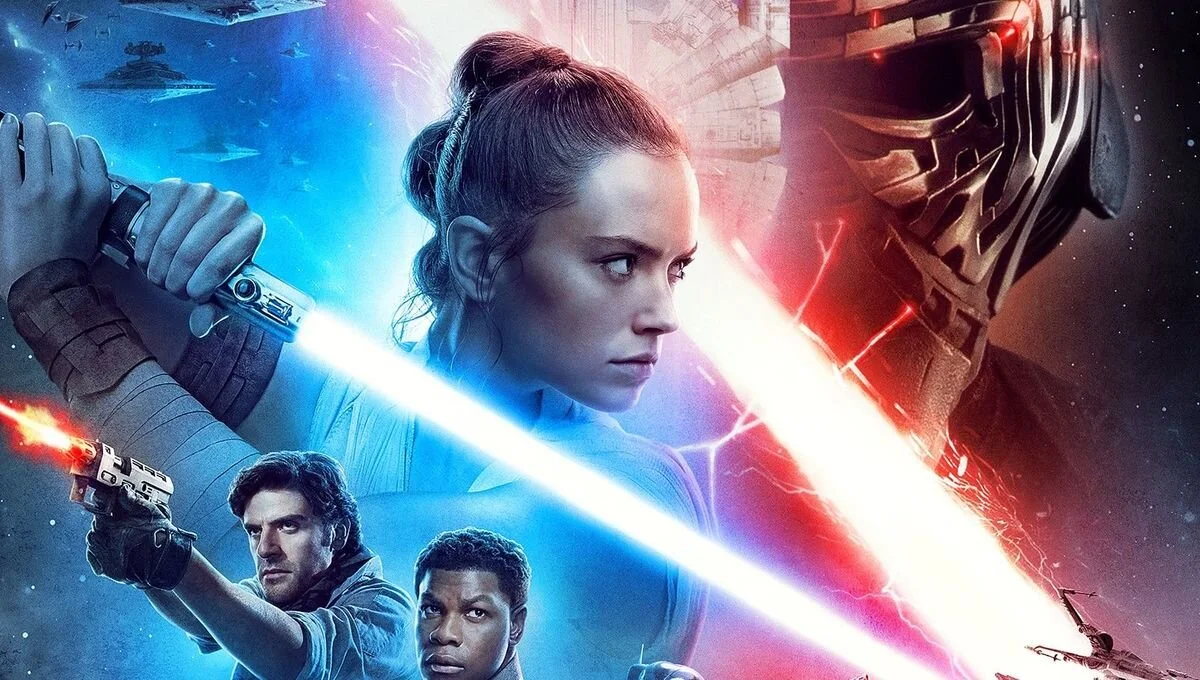Film Review / Essay: Star Wars, Episode VIII: The Last Jedi ****
“Star Wars, Episode VIII: The Last Jedi” ****
Seeing the opening few minutes of “Star Wars, Episode VII: The Force Awakens” (I know this is a ‘review’ or essay on “The Last Jedi,” but I need to set some context) was an incredible experience in that, it was the first time I had no idea what the opening crawl would say. Even in the prequels, we had some idea of what would happen given that we had already seen Episodes VI, V, and VI. This was new. This was exciting. Yet, while I enjoyed “The Force Awakens” and how it returned to Lucas’ original intention of telling a Jungian story with archetypes that follows the hero’s journey, it may have done too much to try and replicate what had come before it. Most of it worked for me. The interesting parallels to the Arthurian legend with Rey being the orphan Wart who is given Excalibur (Luke’s lightsaber) by the Lady of the Lake (Maz Kanata), while Mordred (Arthur’s son, in this case embodied by Kylo Ren, being trained by Luke) who at times is seen as the Black Knight trying to stop them. But, the “Star… base… destroyer”, whatever it’s called, was a bridge too far, or in this case, too similar to the original. So, while, I enjoyed “The Force Awakens” as it felt like the first Star Wars movie since Episode VI, I didn’t love it; which, was a common complaint about “The Force Awakens”… it’s too derivative.
Many fans have also reacted negatively to “Star Wars, Episode VIII: The Last Jedi” saying that it doesn’t feel like Star Wars. To me, it felt like the universe, but it felt fresh, new (ironic that many of these same fans had qualms about how similar “The Force Awakens” was to Star Wars… isn’t this a contradiction?). Rian Johnson is the first director in the entire series, since Lucas, to bring his own style to this universe. Even though “Empire Strikes Back”, I believe is the best film, there is no real change in style from Lucas’ film. But, Rian Johnson, goes out on a limb. For example, red was rarely a color in the palate of the Star Wars universe, causing Vader’s lightsaber to stand out from everything else. Here, Rian Johnson has taken that color and painted the universe with it. The fight in Snoke’s chamber is incredible and suggesting that the Sith are indeed rising at this moment. But, more importantly, for me… he was also the first director willing to create his own theme in the Star Wars Universe apart from the notions of the importance of family that the first series founded.
The story of “The Last Jedi” picks up right where “The Force Awakens” left off. Rey brought Luke back his lightsaber. We all wait with growing anticipation to see how Luke will usher in a new era. That he will restore the balance in the force and become the hero he was meant to be. Only… that doesn’t happen. My reaction when Luke tosses the lightsaber and walks away was shock. This movie was daring to do something different. Something that we did not expect.
In isolation, Luke has not become the wise mentor that Yoda was. In fact, in his isolation, waiting for someone, he actually deepened his own depression. He comes to the uncomfortable truth that the Jedi are responsible for the Sith. It is a realization that happened to the audience in Episode II when Yoda reveals that Count Dooku was indeed his padawan. With the possible exception of the Emperor, the great Sith (in the films!) have emerged from fallen Jedi: Dooku, Anakin, and now, Kylo Ren. Ben Kenobi takes responsibility for Anakin’s fall, telling Luke in Episode VI, “I thought I could train him as well as Yoda… I was wrong.” But, if you trace back the problem of Anakin’s training being incomplete… Anakin was trained by Kenobi, Kenobi was trained by Qui Gon Jinn (remember, Qui Gon was not on the Jedi council because he was considered a rogue Jedi at times), Qui Gon was trained by Dooku… and Dooku was trained by Yoda. The root of corruption in the Jedi is linked to a failure in their training and allowing the Dark Side to tempt some of their greatest members.
The hope for salvation seems to lie in family lines and blood. This is why the original series is an incredible family story, one of redemption, as Luke inspires his father, after being properly trained himself, to renounce the dark side.
Ben tells Luke the truth about Darth Vader
“The Emperor knew, as I did, that if Anakin had any children, they would be a threat to him. That is why your sister remains safely anonymous,” says Ben Kenobi to Luke in “The Return of the Jedi”. For the Jedi, linage is an important concept. The force seems to be passed down in blood line, leading Luke, when he reveals to Leia that they are siblings, to say “The force is strong in my family. My father has it. I have it. And, my sister has it.”
Snoke reconfirms the belief when he meets Rey for the first time: “I knew the force would balance it self with the rise of Kylo Ren, but I expected Skywalker.” Of course, he did. Kylo shares the same blood as Luke, so Snoke believed, as the Emperor would have before him, that Luke would be the logical person to rise. However, Rian Johnson is playing with another theme entirely.
Looking at the supporting cast of the film, we open the other story with Poe Dameron, the hero of the original film, trying once again to be the hero and destroy the pursuing Imperil ship at great cost to their own fleet. He disobeys General Leia Organa in attacking the ship in the first place, but, this time, the stunt backfires. He is not really victorious, and they suffer too many loses. During the battle, we see a fighter pilot give her life to destroy the enemy ship. She is also a hero. This new dynamic begins to set up what the movie is attempting to accomplish. By the end, the belief in famous heroes and the importance of family lineage will be destroyed for something new, something more hopeful.
It is then that the story shifts from Poe, the hero who destroyed… whatever the Star base is called in “The Force Awakens” to Finn trying to enact a plan to find Rey. In doing this, he meets Rose, a mechanic whose sister was the hero who sacrificed her life to destroy the enemy ship. She, like Finn, is an “underling”. She has no place in this story. She is a mechanic and he is a janitor. His name, is not a name, but rather the beginning of his Storm Trooper designation. Even the name Rey seems to be a part of a longer name as if these people are pieces and not heroes like: Luke Skywalker, Poe Dameron, etc.
Back with Luke, Rey eventually convinces Luke to train her and, in this sequence, the force is explained and explored better than in any other film. Rather than using crazy CGI, Rian ingeniously cuts between opposites in nature, feeling the ebb and flow of the force that connects all things, light and dark in the very editing of the film. There is balance. It is incredible. It is what I have been waiting for since Episode IV. In Episode I, they tried to explain it by inventing midichlorians… they less said about them, the better.
The final trial for a Jedi is “the mirror”. We see Luke face the mirror in the cave on Dagobah when Vader emerges and at the end of their fight, Luke discovers Vader is indeed himself. The mirror is supposed to be a Jedi’s greatest fear. It is not about conquering that fear or destroying it… if it was, Luke would have “passed the test” by killing the image of Vader. But rather, it sets up an acceptance for when they do finally face their greatest fear that it will not control them.
Anakin in the cave witnesses the mirror. His greatest fear of losing Padme, caused by himself.
Why George Lucas chose to leave Anakin’s mirror out of the prequels, I will never understand. Tartakovsky, the great animator, who animated the original non-CGI version of Clone Wars on Cartoon Network, included Anakin’s mirror in his series. It is epic and Anakin fails it, not by seeing himself morph into Vader, but rather, when Obi-won asks him “what did you see in the cave” and Anakin responds, “nothing.”
In “The Last Jedi”, we see Rey face a literal mirror since this island is where the Jedi were founded and their training comes from these rocky shores. In the cave below the island, she sees a mirror of herself expanding outward into the future and receding into the past. Her greatest fear is that she is a “no one”. That she has no place in this story because she has no inheritance and therefore is not important. When she approaches the mirror to finally see her parents and who her lineage comes from… it is just her. This prepares her for when Kylo Ren says, “You are a no one… you have no part in this story.” That fear would have destroyed her… but not now.
“The Last Jedi” plays with this notion of “last” because the Jedi are supposed to be highly selective and possibly extend from family lines. But look at who emerges as the main characters in this story. Rey, whose lineage is not important. Finn, a janitor, Rose, a mechanic. A Vice-Admiral rather than an Admiral. Even Leia, in that, everyone expected Luke to be the savoir, however, it is revealed that she is stronger in the force than he is. They needed her to demonstrate a power that no one had seen before to really set up what she was supposed to do in the next film. I am so sorry that we will never see Carrie Fisher fulfill this role… which she has in many ways waited her entire life for. It is tragic. But, moving away from the changes they will have to make in Episode IX, in “The Last Jedi”, no one who is expected or labeled as a hero emerges as a powerful character. In fact, Poe Dameron is wrong and nearly dooms everyone as does Snoke. His death was a phenomenal rebuke to this belief in heritage.
The last shot of the movie is extraordinary as we return to the planet where we met the economically elite in the Star Wars universe for the first time (was that story line badly done? yes, without a doubt, but I do admit… we have only ever seen politically elite in Star Wars. Seeing that gun runners are making so much money off this multi generational war, providing guns to both sides is fascinating), but, we see a “no one”, a slave, a young boy, reach for the broom and it comes to him. He has the force as we all do and therefore the title is ironic because unless all life dies, there will never be a last Jedi.









